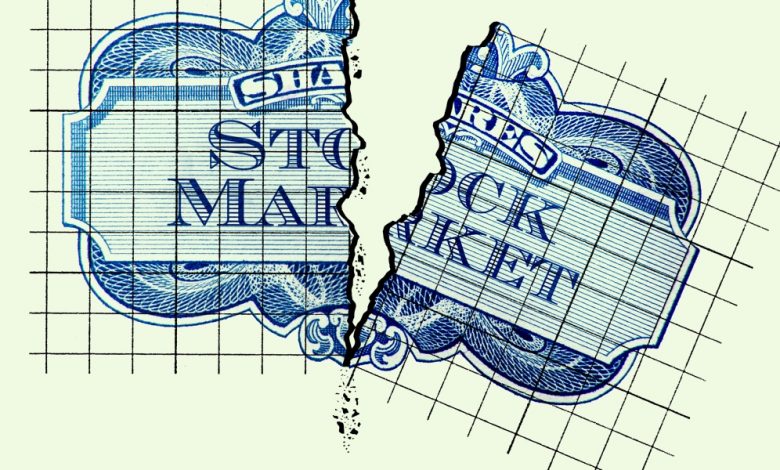2022 was not a good, very bad year for the stock market. Will 2023 be better?

Investors are celebrating the end of 2022 after inflation has skyrocketed and the Federal Reserve’s aggressive rate hikes have made it a brutal year for stocks.
The S&P 500 is down 20% year-to-date, and with bonds simultaneously enjoying their worst year on record, there’s no reason to hide. After more than a decade of strong returns following the Great Financial Crisis of 2008, most investors aren’t used to this kind of carnage.
Between 2009 and 2021, the average annual return for the S&P 500 was a whopping 16.4%, according to New York University. But don’t expect anything like these gains in 2023.
The average investment bank target price for the S&P 500 next year is about 4,000, which means shares will rise just 4%. When wealth Forecasts collected from a broader panel of Wall Street economists and analysts took that number to 4,150, or an 8% gain in 2023. Still, that’s not what most investors are used to.
While investment banks believe the S&P 500 will end 2023 just above where it is today, there is growing consensus on Wall Street that getting there will be a bumpy one.
“Our main message to investors is to be cautious. The Fed is attempting to create an economic soft landing that we believe has a high probability of failing and causing a recession in 2023,” said James Demmert, chief investment officer at Main Street Research wealth. “Equity indices are vulnerable at current levels.”
Watch out for a bumpy start to 2023
Across Wall Street, investment strategists are warning that stocks will have a rough start to 2023 as the Fed enters the final stages of its inflationary war. Annual inflation, as measured by the consumer price index (CPI), has fallen sharply from its peak of 9.1% in June, reaching 7.1% last month.
But that didn’t stop the Fed from raising interest rates for the seventh time this year on Wednesday. Despite critics arguing that rate hikes are pushing the US economy into recession, Fed Chair Jerome Powell said this week that he intends to “stay the course until the job is done.”
“Worse pain would come if we don’t raise interest rates high enough and if we allow inflation to take hold in the economy,” he said.
Against this background, the stock market is likely to struggle in the short term.
Morgan Stanley chief investment officer Michael Wilson said the S&P 500 could fall to between 3,000 and 3,300 points in the first quarter — or as much as 25% below current levels. Earnings will take a hit as companies cope with rising borrowing costs and slowing economic growth, he said, while arguing investors are not yet anticipating the decline.
“A year ago markets ignored the risk of a more hawkish Fed; the market now appears to be ignoring reward risk,” he wrote in a research note Monday, adding that the “risk/reward” proposition of investing in the S&P is “very unattractive” right now.
Scott Ladner, chief investment officer at Horizon Investments, said wealth that he expects the S&P 500’s earnings per share to fall by 10% in the coming months as the Fed’s rate hikes slow the economy and hurt corporate earnings.
“We haven’t seen revenue cut yet,” he explained. “We’re going into a slower growth phase, maybe a recession, and you just don’t get through recessions with earnings that don’t fall a bit.”
A comeback story in the second half?
While Wall Street consensus forecasts call for stocks to decline in the first quarter of the year, things are looking different thereafter.
“Our expectation is that when the market hits bottom — maybe in the first quarter of the new year — we’ll start a new bull market,” said Demmert of Main Street Research. “While there may be further weakness in the first half of 2023, we expect 2023 to end with share prices well above today’s levels.”
Horizon Investments’ Ladner said he also expects markets to take some “pain” in the first quarter, but investors can look forward to solid returns after that.
“We think the back half of the year could be pretty juicy,” he said. “A lot of things that were pretty heavy headwinds in 2022 could be tailwinds in 2023.”
Ladner argued that the big issues that have hurt stocks this year — inflation, China’s tough COVID-zero policy and the war in Ukraine — are likely to be resolved or improved in 2023, which will boost markets.
The comeback thesis of the second half has been getting around on Wall Street in recent months. Economists, investment banks and hedge funds are all warning that stocks — and the economy — are likely to struggle in the first half of the year and then recover.
Morgan Stanley’s Wilson argues that after falling to 3,000, the S&P 500 could rise to 3,900 by the end of next year as inflation falls quickly, prompting the Fed to pause its rate hikes as early as January.
While it might seem like a second-half comeback story contradicts Wall Street’s consistent recession forecasts this year, Ladner pointed out that stocks can actually do well in recessions.
“Most retail people don’t understand this, but it’s the pre-recession period and the first part of the recession that usually causes problems for the markets,” he said.
Ladner also argued that forecasting stocks to remain flat for a decade due to persistent inflation, deglobalization and rising interest rates found him to be a “bet against innovation.”
“That’s a bad idea,” he said. “Just historically, that was always a bad idea in this country. So that’s not a bet we’re making.”
Our new weekly Impact Report newsletter explores how ESG news and trends are shaping the roles and responsibilities of today’s leaders. Subscribe here.



